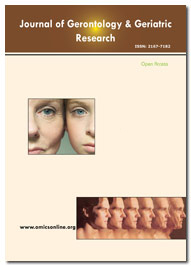索引于
- 打开 J 门
- Genamics 期刊搜索
- 安全点亮
- 参考搜索
- 哈姆达大学
- 亚利桑那州EBSCO
- OCLC-WorldCat
- 普布隆斯
- 日内瓦医学教育与研究基金会
- 欧洲酒吧
- 谷歌学术
分享此页面
期刊传单

抽象的
Age-Associated Alterations of Morphology and ProteinSignaling in the Female F344xBN Rat Aorta
Kevin M Rice, Jacqueline Fannin, Radhakrishna Para, Srinivasarao Thulluri, WilliamTriest, Paulete Wehner and Eric R Blough
The Fischer 344 x Brown Norway F1 (F344xBN) male rat has been shown to undergo many of the same age-associated vascular changes seen in humans [1]. However, limited research has been done to determine if the female F344xBN rat is a good aging female rodent model to study age-associated changes in the vasculature. Previously we reported cardiac increases in oxidative-nitrosative stress and mitochondrial-mediated apoptosis in this model [2]. Aortae from 6-, 26-, and 30-month female F344xBN rats were stained with hematoxylin and eosin, and a trichrome stain to determine intima-medial thickness and fibrosis, respectively. Age-associated changes in expression and phosphorylation of proteins were measured by immunoblotting. Aging in the female F344xBN rat was associated with an increase in aortic intima-medial thickness, activation of p44/42 MAPK, and Hsp27 expression and decreased activation of NF-κβ p50. Hsp90 expression decreased with age in the female F344xBN aorta. There were no age-associated changes in activation of eNOS or Akt or expression of the apoptotic regulators Bax and Bcl-2. Taken together, these data are consistent with the possibility that the female F344xBN rat may be an appropriate animal model to study age-associated changes in the cardiovascular system.